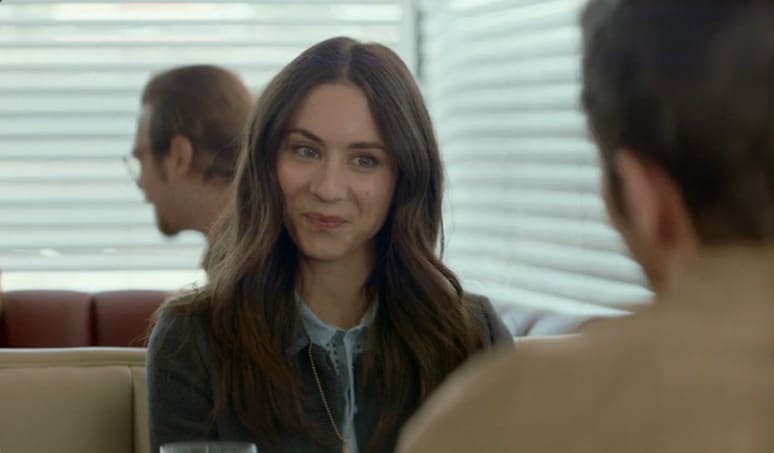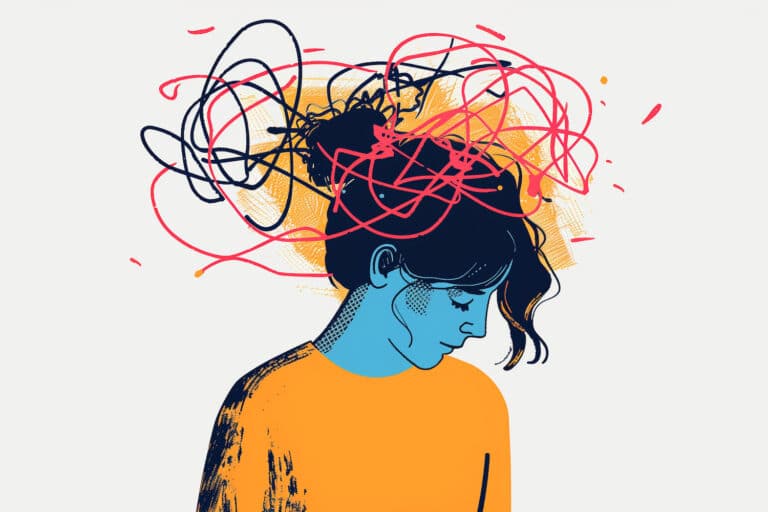By: Kristin Canan
As a therapist who works with eating disorders, I have been very interested in two movies that have been released in the past month and a half. Most of the eating disorder community has been talking about To the Bone, specifically due to concerns with multiple facets of that film surrounding triggers, inaccurate representation of treatment, the romanticism of eating disordered behaviors, and focus on emaciated imagery throughout the movie. Read the review of To the Bone.
So when I heard that there was another movie about eating disorders being released this month called Feed, I was intrigued. How would it represent eating disorders? What would it focus on? How would it represent treatment? How potentially triggering could the film be? What was the motivation behind creating this film? How would it differ from To the Bone?
Feed was written and produced by Troian Bellisario (best known for her role in Pretty Little Liars). Bellisario also stars in the film as the leading actress, Olivia. Bellisario explained she started writing this film three years after her journey with recovery from Anorexia began. Despite being warned by loved ones about the risk of acting in this movie, particularly in the role of Olivia, Bellisario reported feeling that “it was an important part of [her] own recovery.” Bellisario was required to lose weight for the role, but knowing the risks, she proactively started seeing the therapist she had seen years ago during her treatment for Anorexia. As a therapist, I still feel extremely cautious about the potential of relapse for anyone in recovery from an eating disorder, losing weight for a role. However, if chosen, I am glad that she took some proactive steps with someone who is an expert in eating disorder treatment and familiar with Bellisario personally as well to help her navigate thoughts and feelings that may arise and create risk for re-engagement in disordered behaviors.
Overall, I was pleasantly surprised, entertained, and impressed with their production of Feed. The film does a great job of effectively addressing the emotional reality of living with an eating disorder without focusing on or romanticizing behaviors. I find this refreshing and helpful in meeting the objective of raising awareness around the inner reality of people with eating disorders without providing a how-to guide that some media unintentionally provides.
***Please note that the rest of this post is filled with spoilers if you plan on watching the film.***
“It takes a tree a century to do what this darkness does to me in one night.” This quote opens the movie and tells what the next 96 minutes of the film entail. The rest of the film delves into the darkness of living with an eating disorder. It works to help the audience understand the complexity of the emotional torment experienced by people who struggle with eating disorders.
The film focuses on the story of a set of twins, Olivia (Liv) and Matt. Liv and Matt are very close and very different people. Liv is the overachiever slotted to be Valedictorian of her class and is expected to start college at Yale in the fall. Matt is the stereotypical fraternity guy who is seemingly careless and funny while being protective of his twin sister. They laugh and joke together often and spend almost every waking moment together. Following a college discussion, Liv tells her twin brother she does not know how she will live without him (as they both prepare to leave for different colleges the following year). That same night, Liv and Matt get into a car accident during an argument with each other, moments after she asserts she doesn’t need her brother to protect her. Tragically, Matt does not survive the accident.
In addition to doing a fairly remarkable job assisting the audience with understanding complex grief, denial, blame, and depression, the film walks its viewers through an example of how events in life that foster feelings of helplessness or loss of control can lead to efforts and behaviors intended to reassert some semblance of control. The film depicts this battle creatively and accurately, which honors the reality of individuals and loved ones of people who experience eating disorders.
Those not familiar with eating disorders would likely not realize that when the ghost of her brother comes back and starts telling Liv what to do, what to think, what to say, and what to eat (or not eat), her brother is representing a voice similar to the internal dialogue that many people with eating disorders experience. At first, Matt’s ghost is loving and supportive and shows up at a time of deep emotional despair, but as time progresses, Matt’s ghost becomes increasingly critical. It starts isolating her from loved ones by planting promises that others will leave her or hurt her while simultaneously reassuring her that he is the only one she can rely on and the only one who will never leave her.
Matt’s ghost intensifies its criticism, demands, and guilt-tripping as time progresses. He makes Liv run as punishment, eventually reinforcing that she has nothing to keep living for. As she becomes more and more malnourished and as his voice becomes louder, her ability to concentrate on school greatly diminishes. Her energy decreases, her grades fall, and her irritability with others increases. As Matt continues to berate her, he eventually states, “This is never going to end… No one will ever love you, unlike I do.” He encourages her to end it all and to be free with him. As Liv stands on her room balcony ready to jump, her mother and father intervene, and she is rushed to the hospital to be treated for her depression and her eating disorder.
However, Matt’s ghost does not leave, and initially, Liv is afraid to live without it. His presence continues to intensify, encouraging her to lie to the therapist and tell him whatever he wants to hear to get discharged from the hospital. Liv follows the ghost’s demands and continues to keep him a secret until being forced to have a nasogastric tube to ensure she gets enough nutrition. (As a warning, this part of the film is graphic and could be triggering.) Change starts to occur after being told that if she continues what she is doing, her heart will slowly give out, and she will die. She eventually musters enough courage to walk into her therapist’s office and disclose what she has been experiencing, which makes Matt’s ghost furious. He screams at her, “You are nothing without me!” but she can fight him off, finally recognizing and asserting, “You are not my brother.”
That is where her recovery truly begins, but as the rest of the film shows, it is not easy. As Liv identifies, she doesn’t hear Matt’s ghost as loudly, but she continues to feel him at times as her recovery progresses. Eating does not quickly become simple or easy. You see, her eating (or lack thereof) served an essential, valid purpose in helping her feel in control during a time her life was painful and seemingly out of control. Her eating disorder helped her navigate the months following her brother’s death. She replaced one protection she had in her brother with another in her eating disorder. Her work is now to identify other ways to cope while continuing to nourish herself and re-establish the control she has lost to her eating disorder. Despite her assertion that “a world without (her eating disorder) doesn’t seem possible,” Liv starts believing it is. Recovery isn’t easy, but it is worth it.
At Magnolia Creek Treatment Center for Eating Disorders, we know recovery is possible and recognize it isn’t easy. Just like Liv, your eating disorder serves a valid purpose. We are also confident there are other ways to help you navigate the overwhelm you are experiencing without listening to your eating disorder voice, but sometimes it is hard to see what those may be. Let us help you take your control back. Our admissions team would be happy to talk with you further about the support available to you. Please don’t hesitate to contact us by completing our contact form, as you should never have to navigate this alone.




